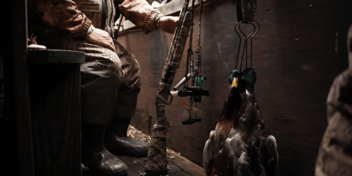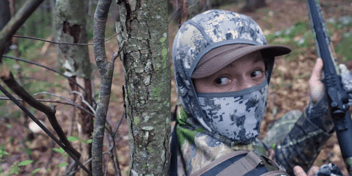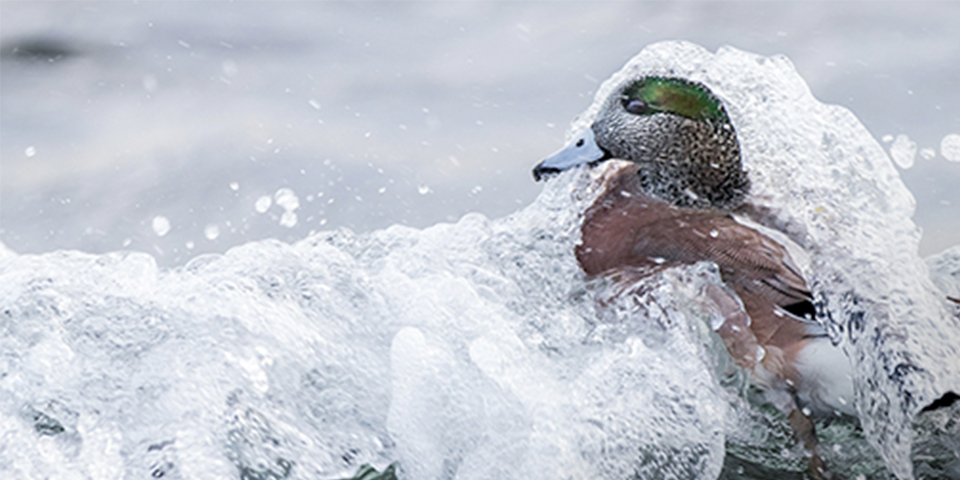
Hunting sea ducks has always been a bucket list trip for me and when I was invited to the coastal community of Stonington, Maine, I jumped at the chance.
The early December hunt has traditionally been prime time, although changing weather patterns in recent years has changed the abundance of birds to some degree.
The good news is there are always ducks around and whether you are chasing eiders, long-tailed ducks, or even scoters, a trip to Maine will provide plenty of shooting opportunities.
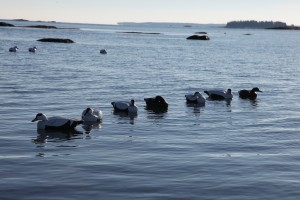
1) Watch The Water
For a prairie boy like myself it didn’t take long to figure out I didn’t need to watch the sky for ducks. Anyone that has chased Canada geese or mallards likely has a regular search pattern they use to scan the sky to the horizon for birds. We also look for slight movement and familiar flock patterns to help find the birds long before they get to the decoys. When it comes to sea ducks, however, forget everything you know about locating dabbling ducks and geese.
Sea ducks are mighty speedsters and wing along at a mind-boggling speed. They also like to move along the surface of the water, often within six to 10 feet of the surface. Now, you might think North America’s largest duck would stick out like a fighter jet flying over the Atlantic but with a myriad of islands, ledges, and rocky outcrops, the birds often blend into their background. To make things even worse, any chop on the ocean turns the water surface dark, further concealing ducks.
Get your eyes off the sky and watch the surface of the water. Flights of ducks are usually spotted against distant shorelines or hovering just above the ocean in large channels.
2) Decoy Lines and Strings
Ducks may be difficult to see when flying but the good news is they have excellent eyesight and hone in on strategically placed decoys. There will be times when a duck appears from out of nowhere to try and land in the water. Even better, there are times when a flock of 4 to 20 ducks will magically appear and immediately catch your attention. It is imperative to stay alert, even though you may have had several early mornings to get out on the ocean and have all your decoys set up for legal shooting light. Focus means a low flying bird that buzzes your decoy string will get shot rather than disappear as quickly as it made its appearance.
Decoys are set in lines, as single set cord decoys would take forever to put out and pick up. The strong tide would also have a tendency to pull smaller weights off the bottom leaving single decoys to be set adrift. Most strings consist of a dozen decoys. When hunting eiders there is a higher number of drake decoys, as the white shows up much better from a distance. Each decoy has a 24 to 30-inch drop line with a rigging pin to attach it to the main line, which is a weighted cord. Each end of the main cord has lead weights to hold the entire rig in a straight line even when facing a ripping tide.
There are several reasons to sink the main cord below the surface. If hunting with a dog, your four-legged friend can swim through the decoy lines without getting hung up. If you are using a tender boat to pick up ducks you don’t have to worry about floating or running over the decoy lines either. The floating decoys will hold the main cord about two feet below the surface, making it easy to hook or grapple when moving the decoy line with changing tides, or to pick up after the hunt.
3) Where To Set Up
Eiders only eat for about 20 minutes a day, making them very efficient creatures at obtaining and storing calories. They prefer to feed on a low tide, which means they won’t have to dive as deep to find their food. Once again, less effort for maximum calories. When they have filled their crops with small mussels they find a place to relax and stay out of boat traffic. The lee side of an island or granite ledge is the perfect place for these large ducks to bob on the surface and relax.
Spotting is often cruising the inlets, channels, and islands looking for groups of eiders either feeding or rafted up relaxing. Finding the birds one day usually means blazing shotguns the next, and a favored spot can often be productive for years, as long as it isn’t over shot.
4) When To Shoot
The best way to kill an eider quickly, with a single shot, is to shoot decoying birds. These hefty coastal dwellers are hard to kill and a well-placed pattern is essential to success. There is nothing worse than having to chase wounded birds that can dive and swim for hundreds of yards under the surface. They can often escape, especially if the surface of the ocean is choppy, which helps hide birds lurking at the surface.
Timing is crucial, as you want the ducks as close to the gun as possible, but you don’t want them to make contact with the water. When they are backpedaling to land you have to shoot quickly, or they simply close their wings and drop to the surface. Once on the ocean, they are extremely hard to kill as the majority of their body is protected by water. They are most vulnerable for a couple seconds before landing when they slow down and fully expose themselves for a head-on shot.
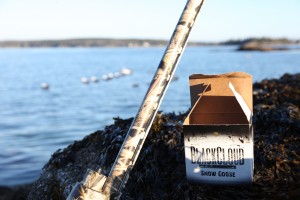
5) Shotshells
Eiders are big ducks and can take a pounding, so make sure to use high velocity, hard hitting shotshells. Federal Black Cloud Snow Goose loads may be misleading by name, but are engineered with bigger waterfowl and challenging shots in mind. Black Cloud Snow Goose comes in BB and 2, touting muzzle velocity of 1,635 FPS. We chose a 12-gauge, 3-inch 1-1/8-ounce No. 2 to get the job done. I prefer to shoot 2s as they have much denser patterns and pellet counts. The increased pellets escalate chances of a head shot and instant kill.
6) Go With the Right Shotgun
Sea ducks are ridiculously fast and will challenge even the best wing shooter. A semi-automatic allows you to stay on a bird, or flock, when a shot opportunity presents itself. Synthetic stocks are highly recommended in these persistently wet and salty conditions.
The Mossberg model 930 Pro Series is ideal for hunting on the ocean, as it not only has a synthetic stock to stand up to the salt and water, but offers special coatings on metal components to ensure proper cycling. And, even more importantly, you don’t have to worry about rust forming overnight and compromising your favorite smoothbore.
A boron nitride coating is used on the gas piston, piston rings, magazine tube, and hammer, sear, return spring plunger and return spring tube to prevent corrosion and makes cleaning a breeze. The main working components of the shotgun—shell stop, bolt slide and elevator—receive additional finishing to further reduce friction for consistent smooth cycling. The Pro Series is available in Mossy Oak Shadowgrass Blades.
If you hunt under harsh weather conditions, or put a shotgun to regular use, the 930 Pro Series will be ready when you are.
By Brad Fenson


